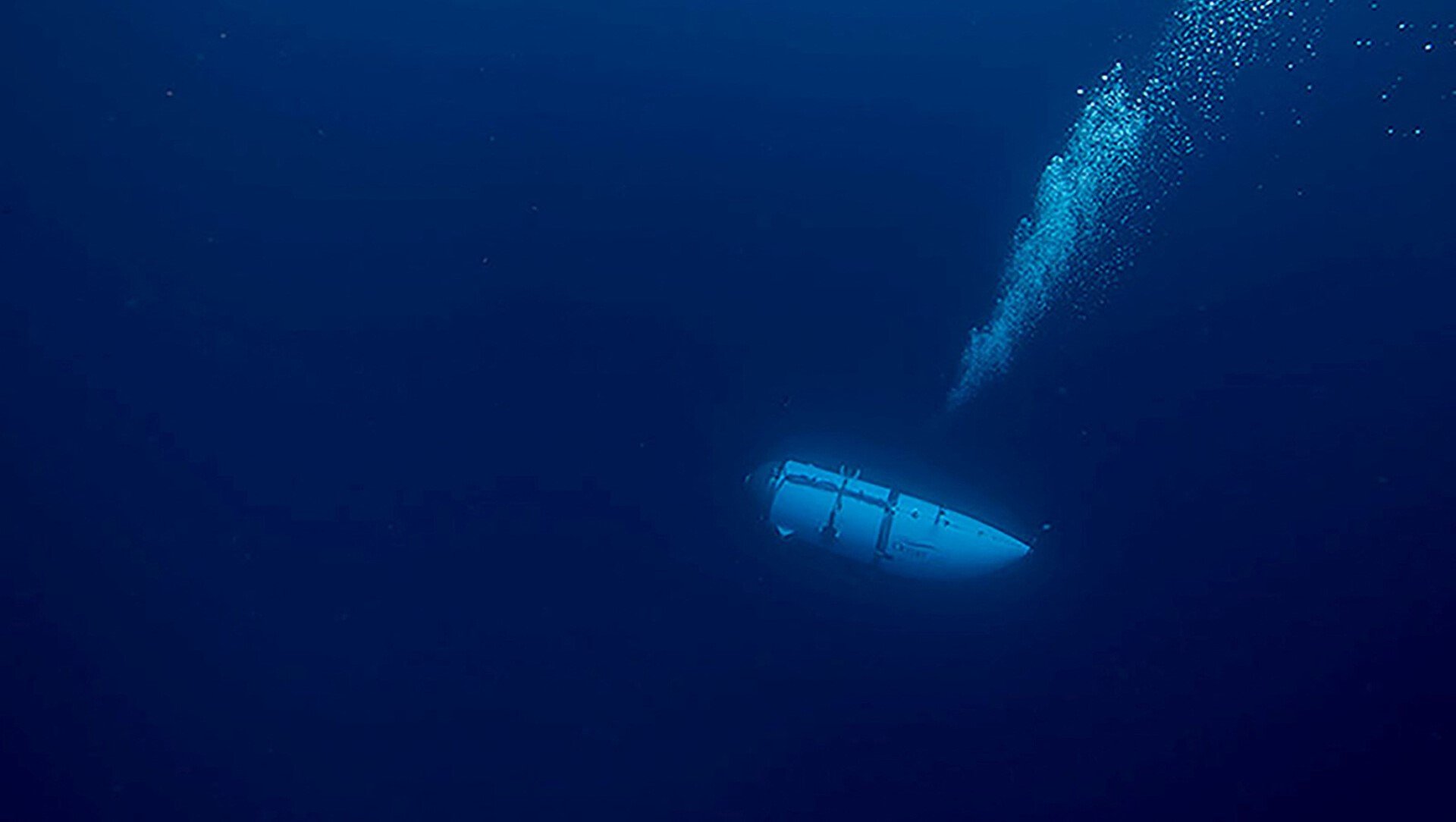
As soon as the wreckage of the deadly submarine Titan was found 500 meters from the wreckage of the Titanic in the North Atlantic Ocean, experts around the world are trying to understand the causes of the explosion that caused the tragic accident.
About the “catastrophic explosion” that occurred in a fraction of a millisecond, Eileen Marty, a former naval officer and professor at Florida International University, told CNN. “The entire hull must have disintegrated before the five people on board knew there was a problem,” he adds. In an explosion at great depth, the “body” will break if the external pressure is greater than the internal pressure. “Even the smallest structural defect can cause such a catastrophe of great depth,” says Professor Eric Fussell of the University of Adelaide. “The explosion lasted 20 milliseconds and the five passengers probably didn’t notice what was happening.”
The Wall Street Journal, citing Pentagon officials, wrote that “the top-secret US Navy acoustic detection system — designed to detect enemy submarines — first detected an exploding Titan, hours after the mini-submarine began its mission.
Elaine Marty believes that the eruption must have occurred at great depth. However, it remains unclear exactly how deep the submarine was when the explosion occurred. “What we do know is that the wreck of the Titanic is at a depth of about 4,000 meters and that the submarine had been submerged for about two hours when contact was subsequently lost.”
two cases
Ryan Ramsey, a former submarine commander in Britain’s Royal Navy, speaking to Sky News, offered two explanations for the tragedy: there was a problem with the Titan’s entry hatch, or a defect in the fuselage. In the first case, Ramsey believes, the submarine’s ‘entrance door’ was damaged, due to water leakage, which then led to the disintegration of the hull under pressure.”
Another possibility is that the submarine’s hull was defective before it sank in the Atlantic and “breaks under stress, producing the same effect”.
Ramsay explained that in both cases the explosion was immediate and the passengers did not have enough time to realize what was happening, he said. “This is the only positive point…”
The second case was indicated by Eric Hasselmann, director of a submarine manufacturing company. For him, OceanGate took “conscious risks” by developing a submarine with “experimental technologies”.
In fact, the deep-sea vessel is made of carbon fiber and titanium, materials that “are not very reliable for building a pressure vessel,” unlike steel, Hasselman says. “The OceanGate submarine simply wasn’t strong enough,” he says, especially since there was no solution to the problem of overpressure on the submarine’s hull.
“break the alcove”
It is also possible that the submarine’s hatch could not withstand a deep dive and opened or cracked under the influence of high water pressure. The diameter of the “porthole” is about 50 cm, which is almost three times larger than the majority of other submarines, notes French BFMTV, citing the opinions of French experts. This large porthole was designed to allow the five passengers to observe the wreck of the Titanic. “But at this depth, a crack the size of a pin is enough to blow everything away in a few milliseconds,” reports the French television network.
Oceanographer Simon Boxall of the University of Southampton told the BBC: “Deep sea exploration in international waters where the Titan is sailing is very unregulated.” “Now that could change as a result of the tragedy,” he adds.
According to various experts, the builders and operators of the submarine, Oceangate, violated recognized standards and ignored warnings. Early in 2018, a letter from the Marine Technology Society (MTS) warned of the experimental nature of the tourism offer, emphasizing that “these voyages could end in disaster.” A former Oceangate employee is said to have raised security concerns five years ago.
Experts now hope to gain insight into submarine safety from the pieces of debris that have been discovered. “There will certainly be an investigation after this disaster and stricter rules will be introduced for these cruises,” David Scott Bedard, president of White Star Memories, which specializes in exhibits of the Titanic, told CNN.
However, the possibility of finding the bodies of the five passengers is unlikely. They will remain forever in the abyss, but also in the memory of people who will wonder how dangerous the pursuit of adventure is…

“Hipster-friendly coffee fanatic. Subtly charming bacon advocate. Friend of animals everywhere.”





More Stories
“Russia should not win in Ukraine”
The man moved to a five-star, all-inclusive hotel because it was cheaper than his rent
USA: The cursed steamship Adela Shores that disappeared 115 years ago has been found – Newsbomb – News